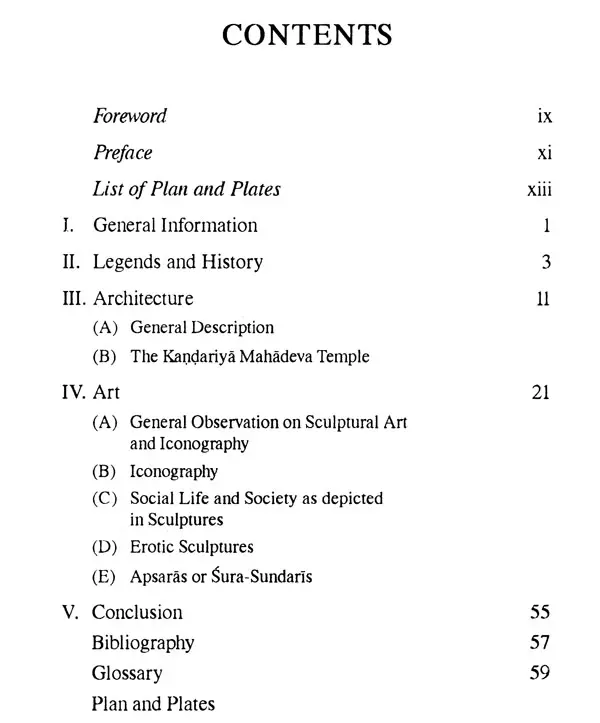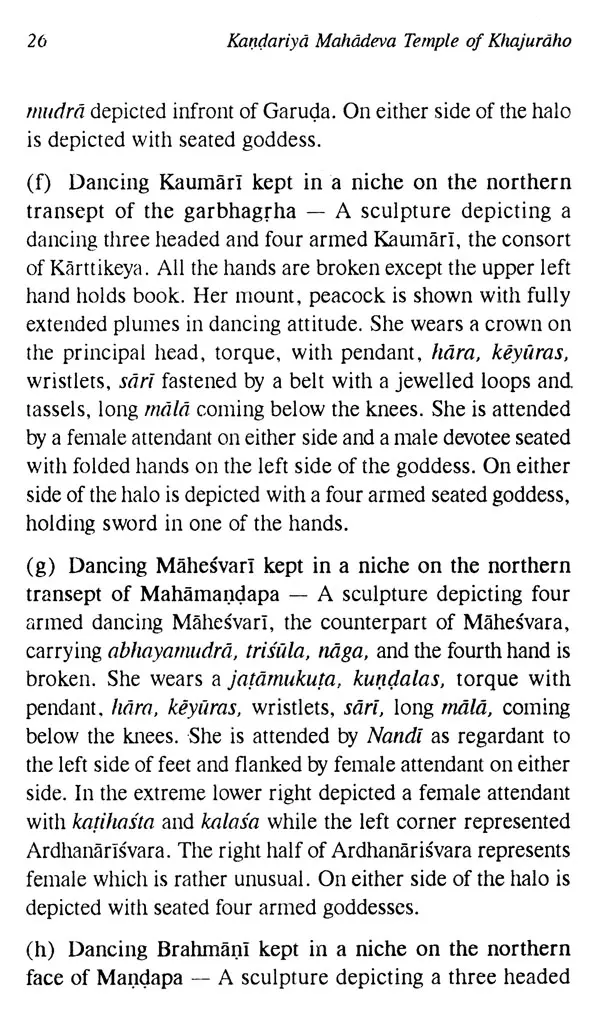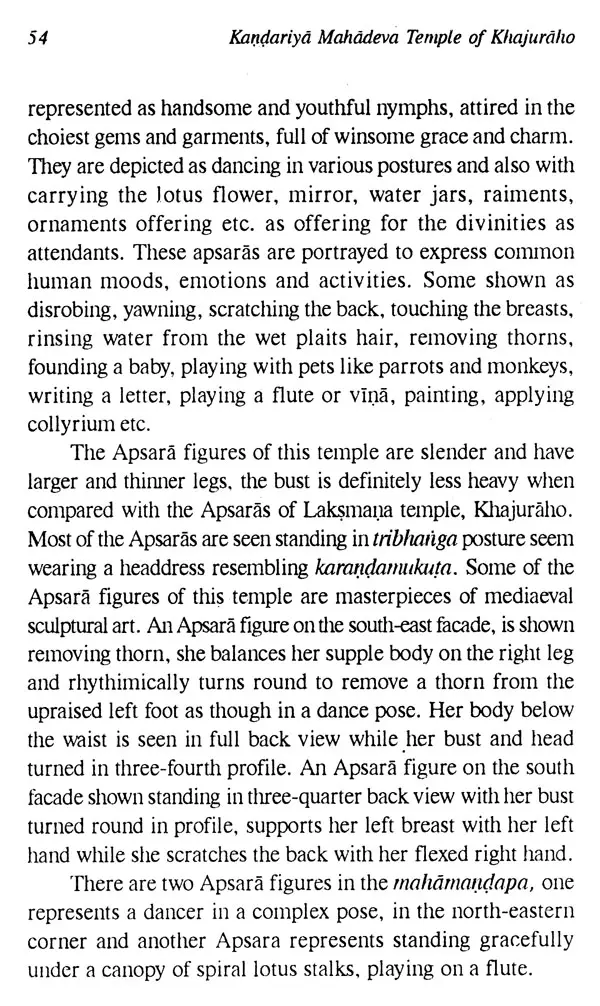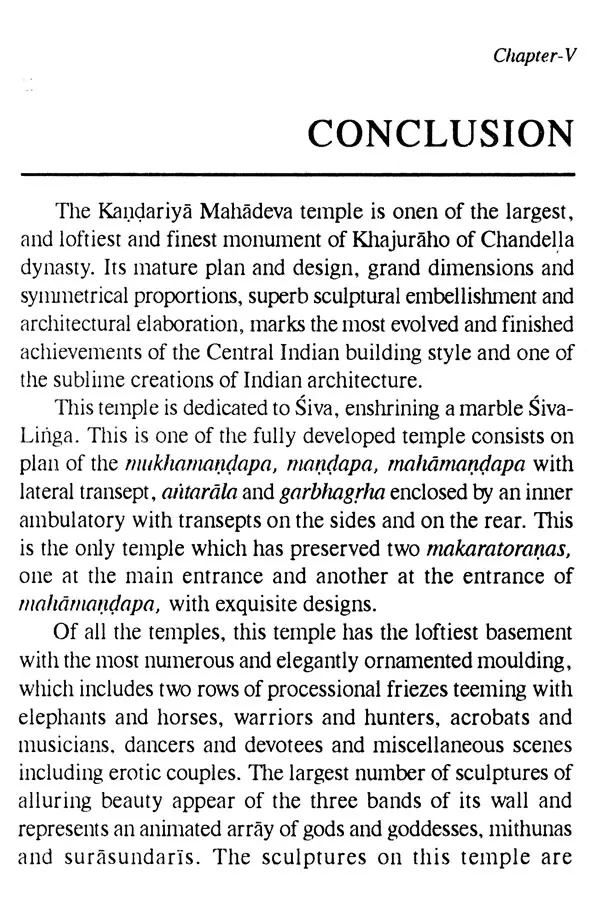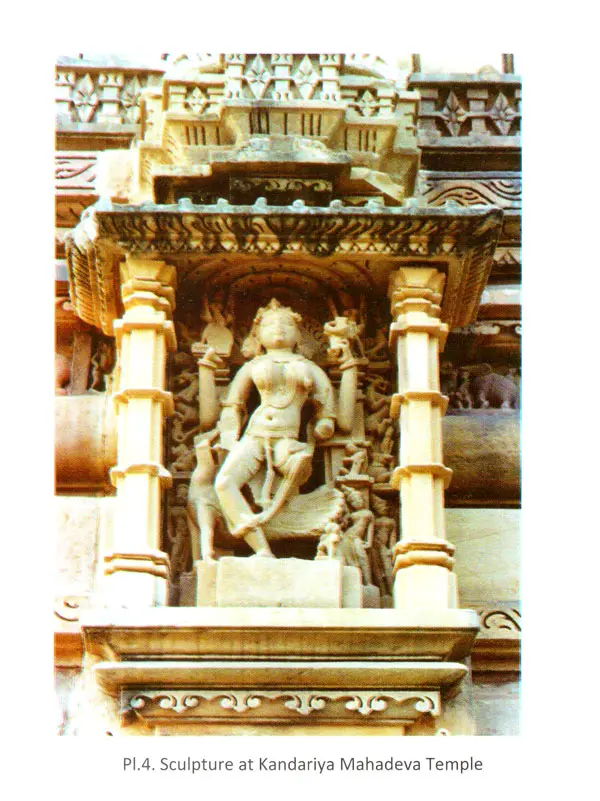
Kandariya Mahadeva Temple of Khajuraho
Book Specification
| Item Code: | UAS778 |
| Author: | K.M. Suresh |
| Publisher: | Bharatiya Kala Prakashan |
| Language: | English |
| Edition: | 2018 |
| ISBN: | 9788186050088 |
| Pages: | 95 (Throughout Color Illustrations) |
| Cover: | HARDCOVER |
| Other Details | 9.00 X 6.00 inch |
| Weight | 280 gm |
Book Description
The Kandariya Mahadeva is one of the finest, largest and loftiest temple among the group of the temple of Khajuraho. This was built during the reign of the Chandella ruler Vidyadhar between Circa 1025-1050 A.D. The Chandella rulers were devotees of both Siva and Visnu. Their well-known Śiva temples are the Matangeśvara, Viśva natha and Kandariya Mahadeva.
In this book, the Chapter I and II deals with location and general history of Chandellas. The Chapter III deals in details with general description and architecture of the Kandariya Mahadeva temple. The Chapter IV deals with the sculptural art, iconography, social life and society as depicted in the sculptures, erotic sculptures and surdsundaris.
This work aims at presenting a detailed and systematic study of temple and sculptures in particular.
Dr. K.M. Suresh (B. 1952) presently working as Director (Museum) in the Kannada University, obtained his Master's Degree in Ancient Indian History, Culture and Epigraphy from Karnataka University in 1974 and Post-Graduate Diploma in Archaeology from the Institute of Archaeology, Archaeological Survey of India, New Delhi in 1986. He obtained Ph.D. from Utkal University, Orissa in 1992 on 'Sculptural Art of Hampi-Vijayanagar'.
Since his inception in the Archaeo logical Survey of India in 1976, he has served in various capacities in the Archaeological Museum at Bijapur, Hampi, Khajuraho, Aihole and Badami. He has been active field worker in the Excavation Branch IV of Archaeological Survey of India, Bhuvaneshwar.
Dr. Suresh's other works are Saivite Sculptures of Khajuraho; Sculptural Art of Hampi; The History of Chandellas; Early Western Chalukyan Sculptures from Aihole, Badami, Mahakuta and Pattadakallu; A guide book on Aihole Monuments; Megalithic Culture in Northern Karnataka; Forts and Fortifications of Vijayanagar; and Veera bhadra Temples and Sculptures from district Bellary in Karnataka. He has contributed several research papers for leading Journals and Felicitation Volumes.
Indeed. I was thrilled by the magnificent temple of Kandariya Mahadeva and its sculptures in and around this temple, which was built by the Chandella ruler Vidyadhara between Cairca 1025-50 A.D. This is one of the finest, largest and loftiest temple among the group of temples of Khajuraho. This temple mark the culmination of the Central Indian building style and fully developed in the saptaratha on plan and in elevation which marks the highest development of Hindu architectural design.
In this monograph, the Chapter I and II deal with location and general history of Chandellas. The Chapter III deals in details with general description and architecture of the Kandariya Mahadeva temple. The Chapter IV deals with the sculptural art, iconography, social life and society as depicted in the sculptures, erotic sculptures and surasundaris.
A few books on Khajuraho monuments and sculptures comprehensive study of particular temple with its sculptures and iconography. This work aims at presenting a detailed and systematic study of temple and sculptures in particular.
I am grateful to Professor S. Settar, Chairman, Indian Council of Historical Research, New-Delhi, for contributing a foreword to this monograph and for his kind words of appreciation. My grateful thanks to Shri C.T.M. Kotraiah who gave encouragement and took immense pains in guiding me at every stage this work.
Khajuraho, a modern village situated on the left bank of Khudra-Nala, a tributary of the Ken river, in the district Chhattarpur of Madhya Pradesh was one of the capitals of Chandellas, but it is better known for a group of temples, built between the 9th and 12th century A.D. The Chandella rulers were devotees of both Siva and Visnu. In their inscriptions, Śiva is invoked as Mahadeva, Viśvanatha, Maheśvara Kedara and so on; their well known Śiva temples are the Matanageśvara, Viśvanatha and Kandariya Mahadeva.
Of these, the Kandariya Mahadeva temple is the finest largest and the loftiest of temples at Khajuraho. This was built during the reign of Vidyadhara, between c. 1025 and 1050 A.D. It measures about 30.5 mts. in length and height and 20 mts. in width, excluding the platform; it rests on the fully developed jagati and consists of mukhamandapa, mandapa, mahamandapa with lateral transepts; antarala and garbhagṛha enclosed by an inner ambulatory passage with transepts on the side and on the rear, while its elevation consists of jagati (platform), adhisthana (bansement), jangha (wall portion) and sikhara.
This temple displays a large number of sculptures of arresting beauty. They appear on the three bands of its walls and represent gods and goddesses, mithuna and surasundaris, vyálas and nagis. This is the only temple which displays who makaratoranas.
Book's Contents and Sample Pages

